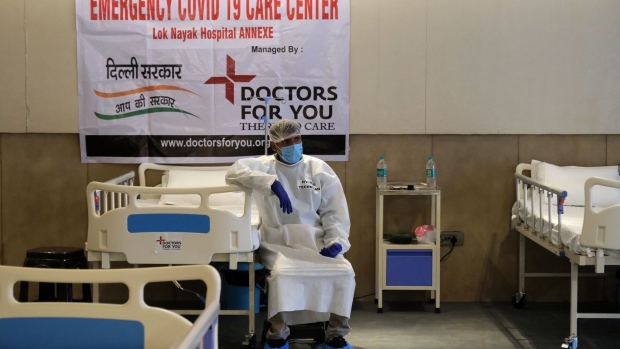Jul 6, 2020
India’s Coronavirus Epidemic Overtakes Russia to Become World’s Third Biggest
, Bloomberg News

(Bloomberg) -- India’s coronavirus epidemic became the third biggest in the world as infections surged after the nation eased containment measures to reverse an economic collapse that has left millions destitute.
The Asian nation reported a total of 697,413 cases overtaking Russia, according to data shared by India’s health ministry. India is now trailing only the U.S. and Brazil, and is on track to surpass the 800,000 cases forecast for this month by a team of data scientists at the University of Michigan.
The country has failed to suppress new cases despite implementing one of the world’s most-expansive lockdowns at the end of March, when there were fewer than 1,000 cases. Prime Minister Narendra Modi was forced to ease the curbs in June to rescue an economy that’s hurtling toward its first contraction in more than four decades.
India has become one of the worst hit countries as the global epicenter of the coronavirus is continuing to shift. The outbreak emerged in China, spread to Europe, and now developing countries with weaker health-care systems such as Brazil and India are reeling. Since late March, the U.S. has had the most cases globally and is still adding infections at a record daily pace.
A spokesperson from India’s health ministry did not immediately respond to a written request for comment.
The epidemic has left India, a nation of 1.3 billion people, under pressure with chronically understaffed and underfunded health-care infrastructure. India ranked 154 out of 195 countries in global health-care access and quality even before the coronavirus struck.
After overwhelming the capital New Delhi and financial center Mumbai, the coronavirus is now moving through the country’s vast hinterland. Millions of migrant worker who lost their city-based daily-wage jobs in the lockdown have now returned to their native villages. This has created new routes of transmission for the virus to rural areas where medical facilities are even more rickety.
While India’s confirmed cases are skyrocketing, reaching more than 20,000 cases a day, the rise in death toll hasn’t been as dramatic, although there are concerns that deaths are being under-reported. India’s officially reported case-fatality ratio is lower than that in countries such as Japan and Germany, and its younger population -- who are less likely to fall seriously ill from infection -- is a contributing factor.
Meanwhile, early indicators suggest that economic gains from the initial easing of the lockdown measures -- allowing all shops to open and domestic air travel to resume -- are beginning to dissipate, according a July 1 report from Bloomberg economist Abhishek Gupta. The International Monetary Fund predicts India’s economy will contract by 4.5% this year.
©2020 Bloomberg L.P.